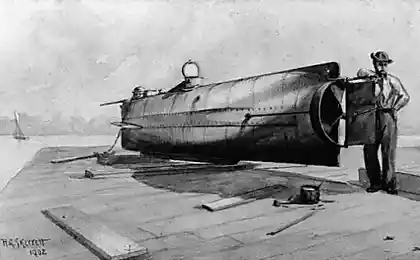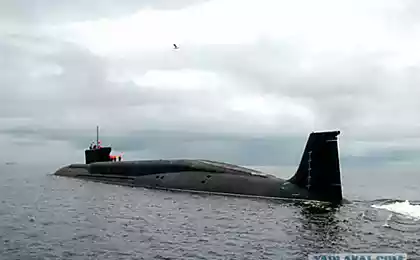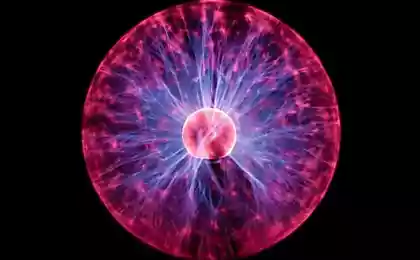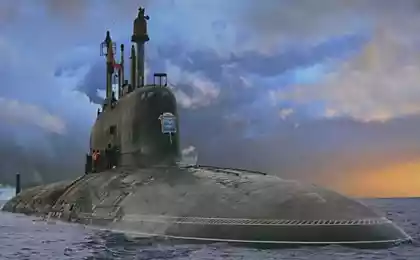1333
Submarine for ... Titan. Or maybe a time machine?

Titan - superholodnaya this planet: the average temperature on the surface - in the area of minus 180 degrees Celsius; the water here does not exist in any form, except for deep frozen ice. Terms will not fit for human life.
However, oddly enough, Titan has more similarities with the Earth than any other planet in the solar system, despite the gigantic differences in temperature and other climatic conditions.
Titan's surface is very similar to Earth's. She found ridges, dunes, numerous lakes and peaks, including many volcanoes. As on Earth, the atmosphere on Titan, it seems, has erased most traces of meteorite craters. Titan - the only one known to man natural satellites, which have a dense atmosphere, and the only known celestial bodies (besides Earth), the surface of which there are stable liquid lake. And the role of water in the hydrological cycle on Titan perform methane and ethane; they fall as rain and snow, they also form the lakes and rivers.
There is a good chance that the chemical composition of Titan's atmosphere is very similar to the one that was in the world at that time, when she appeared on our planet. If it turns out that the current chemical processes occurring on Titan, support prebiotic chemistry similar to the one that accompanied the development of life on Earth, studying Titan, we can explore the deep past of the Earth, and perhaps better understand how originated on our planet life.
Most of the information about this planet to date obtained by the automatic station "Cassini" Inspect Saturn and its moons for five years. In addition, the "Cassini" played the role of a base ship for the device "Huygens" European Space Agency, who in 2005 sat on the surface of Titan.
As a result of the expedition was discovered many new incredible things, such as evidence of the existence of ice on Titan (water) and ammonia "kriovulkanov." Judging by the reports "Cassini" images, these volcanoes emit ammonia on the surface of the planet.
Not surprisingly, the interest in the study of this mysterious planet is not quenched and revived today under the 2010 project NIAC, which is now represented the part of the space technology program NASA, conducted the development of the concept of a submarine to study the seas of Titan. Strictly speaking, it would be better to call it a Western-style submarine, because the sea on Titan is not composed of water and of hydrocarbons - mostly methane and ethane.
Let's try together to run through the history of the problem and assess the feasibility of the project based on the current level of technology.
Back to the Future. B> h4> Let's talk about the precursors of this concept, including those that will not fly, and, apparently, will remain unrealized projects. It's right in the future held for some!
Close all technical details should Titan Mare Explorer (TiME) - which was to explore Ligeia Mare and Kraken Mare for the determination of organic components. The device had to descend by parachute, just as it did, "Huygens" in 2005. After several hours in the atmosphere it is planning to drive the liquid surface. The unit was planned as a floating platform whose mission - find the simplest forms of life over a period of three to six months, including six o'clock atmospheric descent.
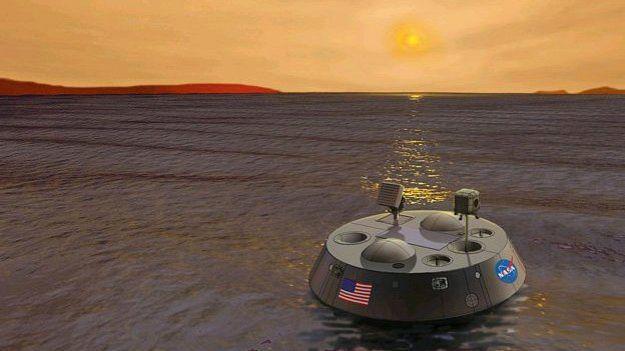
Despite the fact that the project was planned as a low-cost TiME mission with the financing of only $ 425 million, he lost to competition from more successful rival - InSight program to explore Mars. However, the development of the concept of the project was mastered from 5 to 10 million dollars, and many interesting solutions that have been found during this process can be used in other missions, most real of which is by far the Titan Saturn System Mission (TSSM). This is a joint project of NASA and ESA to explore Saturn and its moons: Titan and Enceladus. On the calculation of the cost of the NASA project will cost in the 2, 5 billion dollars. TSSM is planned to start in 2020. TSSM apparatus includes one and two orbital reentry module: a balloon that will fly in the sky of Titan, and a lander, which is to splash down on the surface of one of the methane lakes. Upon arrival to Saturn in October 2029 chemical engine will display apparatus into orbit around Saturn. The two-year work plan for the planet must be "on the situation." Phase will include a minimum of seven spans and encounters with Enceladus and Titan sixteen. During this period will be repeated gravimanevr, which will give the necessary energy to move to the orbit of Titan. Once the device has completed circled Enceladus, it will analyze unusual kriovulkanicheskie education at its south pole.
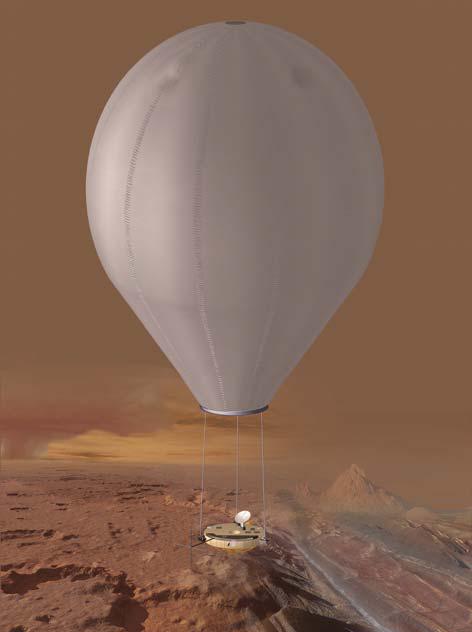
The balloon will be released into the atmosphere of Titan during the first flyby. He will remain in airspace satellite earth six months from April to October 2030. Based on data from the Cassini-Huygens, the ball will float in the sky of Titan before the end of its life on the 20th degree of north latitude and 10 kilometers above the surface.
Riddles seas of Titan h4> Scientists know that along the shoreline on Titan is the sediment left by evaporated liquid hydrocarbons; this indicates a sharp fluctuations in sea level.
Titanium orbit changes lead to the fact that the liquid components of its atmosphere every 30,000 years moving from one pole to another. Currently, they are concentrated in the northern polar regions of the satellite.
Titan's main task is to obtain information on aspects such as: surface composition and geographical distribution of various organic elements, identifying methane cycle and pools of methane, whether active now cryovolcanism and tectonism, ammonia is present or absent, the study of subsurface ocean, magnetic field, and more. Submersibles could do research the bottom of shallow seas of Titan, which, by assumption, planetary scientists, is a giant ancient meteorite crater.

Scientists also conjectures about the presence in the ocean stratification layers of Titan - similar to what is observed in the Black Sea, where the surface layer disposed over the layers of salt water with a high content of hydrogen sulfide.
Thus, the submarine will have to be faced with very serious problems, the main of which is to work in conditions of very low temperatures and very aggressive in terms of chemical Wednesday.
The Pentagon will contribute? B> h4>
Today it became clear that many of the tasks on the study of the seas of Titan only by immersion robot, so the submarine space with a high degree of probability can replace the floating platform during the mission TSSM, well, or to supplement it. In this case, the descent to the surface of the sea is likely to be carried out by means of a parachute - the most logical way for the planet having an atmosphere.
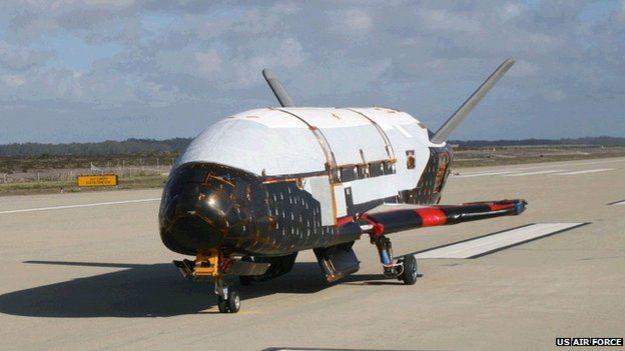
However, there are other options, the most exotic of which is the proposal to use the device for delivery to Titan existing warship reusable X-37B, which was commissioned by the Pentagon and has recently undergone a series of tests.
If there was a sea of vodka, I would become a submarine! B> h4> One of the most serious problems to be solved submarine designers - energy supply. On the part of the layman situation probably seems absurd - to swim in the sea of hydrocarbons and look at this energy! However, for the release of energy from the seas of Titan requires an oxidizer. On Earth, in his role as advocates oxygen, which too little on Titan, so you have to postpone the diesel generators to better times and look for other solutions.
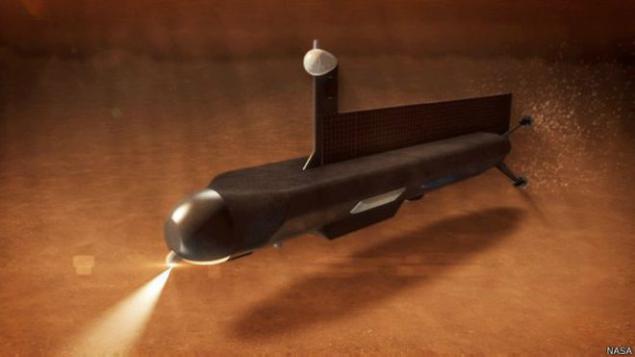
Widely used at present for less distant fly solar panels, unfortunately, are not suitable. They can not be used even after surfacing due to foggy atmosphere of the satellite and a large distance from the sun. It seems that today there is no alternative to the use of isotopic energy source. Typically, as the power source in such devices is the plutonium-238 which generates heat as a result of half-life. And along the way there is a serious problem - the US production of this isotope discontinued back in the 1980s, and its reserves are today coming to an end. The fact is that most of this isotope is a byproduct of the manufacture of nuclear weapons, the program of work on which has recently greatly reduced.

Laboratory prototype Stirling radioisotope generator.
As part of the project mentioned above TiME intended use of the new energy system called "radioisotope generator Stirling", which provides the most efficient energy recovery of plutonium-238, but its development has been suspended in connection with this project.
Land, they heard? Priёmmm. B> h4> So far, the developers have not identified a set of instruments that could carry submersibles. But the obvious candidates are the sonar, cameras and sampling system from the ground.
Connection to the Earth is important for the success of this expedition. TiME project provides for direct data transfer, as the north pole of Titan during the current decade is oriented towards the Earth.
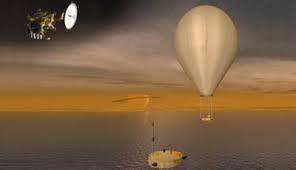
But towards the end of the decade the Earth moves lower and lower to the horizon of Titan, which complicates a direct link. Therefore, this kind of communication is possible now only during the expedition, which is scheduled for 2040, when the inclination of the orbit of Titan again become favorable.
However, there is another option - planting unit can be operated with the orbiter, which will remain in orbit around Titan and will broadcast to Earth signals from the submarine. That, in turn, will transmit information during the ascent to the surface. This option leads to a significant increase in the cost of the entire project, but on the other hand fits perfectly into the program TSSM.
Is there a place for Russia? B> h4> In my opinion, ambitious interplanetary mission TSSM level should be carried out in close cooperation of an increasing number of countries. Today there involved the United States and Europe. Agreement to participate in the mission of the Russian Space Agency discussed, but in connection with the current course of the country on a "special way" the chances of it decreases with each passing day. Of course, I want to believe in miracles, because our energy superpower indifferent to the sources of hydrocarbons, no matter how they were difficult to access. Can be done when the victorious development of the Arctic, our government has turned their eyes to the cosmos, and polonium reserves will be used to fuel for the space program, and not to improve specific properties of individual varieties of tea? And suddenly, a miracle happens, and I still have to participate in the development of electronics for the space of the submarine, because it was the same this week, the Northern Lights in the Moscow region, in the end, a few days before the solar eclipse, by the way!
P.S. I am grateful to the user zv347 for their help in editing the text. I>
Source: geektimes.ru/post/247620/
Beneath the surface of the moon can be a huge cave
Chapter Lyft: unmanned vehicles - this is not the future









